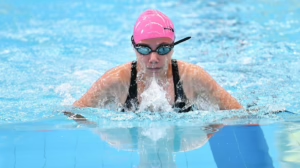Navigating Complex Concepts: A Day in the Life of a Physics and Math Tutor
Introduction
In the realm of education, subjects like physics and mathematics are often seen as daunting challenges. However, for those who immerse themselves in these disciplines, they can also be seen as vast landscapes rich with beauty and complexity. As a tutor in these fields, one becomes a navigator, guiding students through intricate theories and problem-solving techniques, all while fostering a deeper understanding and appreciation for these sciences. In this article, we explore a day in the life of a physics and math tutor, highlighting the unique challenges and rewards that come with the role.
Morning Routine: Preparing for the Day
The day typically begins early, around 7 AM, with the first rituals involving coffee and a review of my schedule. The coffee serves not just as a caffeinated wake-up call but as a moment to gather my thoughts. I often reflect on the topics I plan to cover during the day. Today, I have four tutoring sessions lined up, each focusing on different students and concepts.
Planning Lessons
My focus today will span from calculus to classical mechanics. The night before, I had prepared lesson plans tailored to each student’s learning style. For Sarah, a high school junior struggling with integrals, I’ve outlined a series of example problems that connect real-world applications to the abstract concepts of calculus. Meanwhile, for Mark, a college freshman delving into Newtonian physics, I aim to make the connection between mathematical formulas and their practical implications in everyday life.
First Session: The High School Sophomore
At 8 AM, I meet with Sarah for our first session. She arrives, a little anxious, her notebook filled with doodles rather than equations. After a brief chat to ease her worries, we dive into calculus.
Building Confidence
“Calculus can seem like a foreign language,” I assure her, “but once we break it down, it’s just a series of conversations about change.” I start with the fundamental theorem of calculus and its importance in bridging the concept of differentiation and integration. We use graphical representations to illustrate how areas under curves relate to instantaneous rates of change.
Sarah initially struggles to grasp how integrating a function can represent an area but gradually begins to connect the dots when I illustrate it using the velocity function of a car and the area under the curve representing distance.
Hands-On Approach
To further demystify integrals, we engage in hands-on learning. I provide physical objects, such as pieces of graph paper and markers, and we sketch various functions together. This tactile experience tends to ground her understanding, turning abstract symbols into something she can visualize. As we work, I note her evolving confidence. By the end of the session, we tackle a real-world problem: finding the area under a velocity-time graph, providing a context that she finds relatable and relevant.
Mid-Morning Break: Reflection and Learning
After Sarah leaves, I take a moment to reflect on the session. I jot down notes on her progress and areas where she still struggles—this will help me tailor future lessons. I find that reflection is crucial for any tutor; it serves as a diagnostic tool for improving teaching strategies.
Second Session: College Physics
Following my break, I prepare for my session with Mark, a spirited college freshman who has a penchant for physics. He walks into the room animated, ready to tackle topics around Newton’s laws of motion.
Exploring the Classics
“Physics is about understanding the world around us,” I remind him, and we dive into a discussion about the first law of motion. Initially, Mark comprehends pure theory, but when I transition to practical examples—like a hockey puck sliding on ice—he begins to see the real-world applications of the concepts.
To deepen his understanding, I present various problems involving friction and air resistance. Together, we work through equations, using free-body diagrams to visualize forces acting on the objects. This visualization technique appears to resonate well with him, and I encourage him to keep drawing as we work through problems.
Fostering Inquiry
Diving deeper into Newton’s second law, we discuss the relationship between force, mass, and acceleration. In a moment of inquiry, I ask, “What would happen to a rocket in space if it were to apply a force?” Mark contemplates and answers, “It would keep accelerating because there’s no friction.” I guide him to further explore the implications of this statement.
Throughout the session, I integrate questions that prompt him to think critically rather than simply memorize concepts. This fosters an environment of inquiry, making learning a dialogue rather than a monologue.
Lunch Break: Recharge and Read
Noon rolls around, and it’s time for a well-deserved break. I often use this time to recharge—not just physically, but mentally. A quick lunch allows me to rejuvenate before the next round of students, while I often delve into educational articles or physics-related literature during this time.
Reading keeps me updated on new teaching methods and discoveries in the fields I tutor, ensuring that I can bring fresh perspectives into my lessons. Today, I skim through an article on the latest research in learning and cognitive science, noting methods for improving student engagement and retention.
Afternoon Sessions: Advanced Topics
By 1 PM, I’m ready for my advanced math student, Kevin. A pre-calculus whiz, he is preparing for the Advanced Placement exam.
The Challenge of Advanced Topics
Kevin is eager but slightly overwhelmed as we navigate complex topics like sequences and series. I know that this precision in mathematics often requires not just computational skill but also an understanding of the philosophical underpinnings of mathematics.
In our session, I introduce the concept of convergence and divergence of series, architecture that often intimidates students. I lead him through the process of determining convergence using the ratio test, emphasizing a methodical approach to problem-solving.
Encouraging Mathematical Thinking
To encourage critical thinking, I present Kevin with a challenge problem that involves not just computation but creative reasoning: “Can you devise a way to relate the sum of an infinite geometric series to real-world phenomena?” His eyes light up as he starts drawing parallels with nature.
Through this collaborative inquiry, he begins to see mathematics not just as abstract numbers, but as a language that describes patterns in the natural world. By the end of our session, Kevin shows greater enthusiasm for the subject, which reaffirms my belief that curiosity drives mastery.
Late Afternoon: A Group Session
At 3 PM, I host a small group session with three students from different backgrounds. Group tutoring introduces a different dynamic, where students can learn from each other, exchange ideas, and collaborate on challenging problems.
The Value of Peer Learning
In this session, we tackle complex topics, such as vectors and their applications in physics. I set up a series of puzzles involving both mathematical calculations and conceptual tasks, encouraging the students to solve the problems collectively.
The students engage in spirited discussions, leaning on each other’s strengths and weaknesses. Witnessing this collaboration reaffirms the value of peer learning—students often articulate their understanding in ways that resonate with their peers more effectively than any tutor could.
Problem-Solving Strategies
As they tackle problems, I circulate the room, offering guidance and asking probing questions to keep them engaged. This method helps them not only learn the material more profoundly but also develop essential problem-solving strategies. The session concludes with each student presenting a solution to a problem they worked on as a group, showcasing a blend of individual and collective effort.
Evening Reflection: Preparing for Tomorrow
By 5 PM, my tutoring sessions conclude. I take a moment to wind down, reflecting on the day’s experiences and lessons learned.
Continuous Improvement
I often write brief notes on the day’s sessions, focusing on student engagement and areas where I felt effective or could improve. This continuous feedback loop enables me to adapt and respond to the evolving needs of my students.
In addition, I plan for tomorrow’s sessions, ensuring that each student’s lesson is adapted based on today’s interactions. Understanding the intricacies of students’ learning styles gives me the momentum to tailor future lessons and strategies.
Conclusion: The Reward of Mentoring
At the end of the day, the dual role of being a physics and math tutor encompasses much more than simply conveying knowledge. It involves building relationships, fostering curiosity, and encouraging a sense of wonder in the subjects being taught. The journey is not always smooth; students struggle, and concepts can sometimes feel overwhelming. Yet, amidst these challenges lies the potential for profound understanding and growth.
As I close my laptop and prepare for tomorrow, I feel a sense of fulfillment that stems from witnessing my students’ transformations—from uncertainty to confidence, from confusion to clarity. Each student brings unique perspectives and challenges that continuously enrich the tutoring experience, making it a rewarding venture for both the tutor and the student.
Through adaptive learning strategies, fostering inquiry, and encouraging peer interactions, we navigate the complex concepts of physics and mathematics together. In the end, the goal is not merely to excel academically, but to empower students to think critically, question the world around them, and become lifelong learners.
References
- G. G. Watson, The Role of Inquiry-Based Learning in Mathematics Education, Journal of Mathematics Education, 2021.
- S. R. Collins, Integrating Physics with Calculus: A Study of Effective Teaching Methods, Physics Teacher, 2020.
- D. E. Larson, Effective Strategies for Teaching Mathematics to Diverse Learners, International Journal of STEM Education, 2019.
- R. M. Xiong, The Benefits of Peer Learning in Academic Settings, Educational Psychology Review, 2018.


























Add Comment